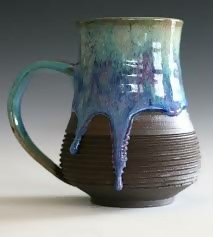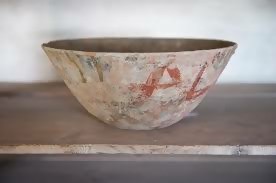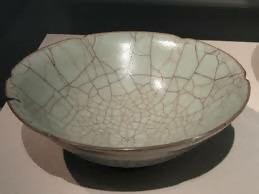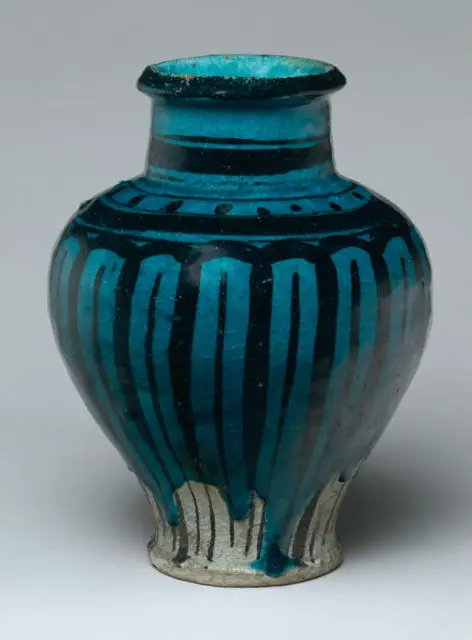 Hey there! I am sure you have been in a situation whereby you had to dispose of your glaze due to it going bad. If you have not encountered anything of such, Congrats! This article will guide you on how to prevent such situations. As earlier said, glazes may not always come out the way we expect or hope they will. Sometimes there are happy surprises, but we can also experience real frustration when we open the kiln to find glaze. More often than not, glazes go bad and it can cause a lot of defects on the body of your projects.
Hey there! I am sure you have been in a situation whereby you had to dispose of your glaze due to it going bad. If you have not encountered anything of such, Congrats! This article will guide you on how to prevent such situations. As earlier said, glazes may not always come out the way we expect or hope they will. Sometimes there are happy surprises, but we can also experience real frustration when we open the kiln to find glaze. More often than not, glazes go bad and it can cause a lot of defects on the body of your projects.
SIGNS OF A BAD GLAZE
- Change in Texture
If you notice your glaze texture has changed mixed with water, it is a clear sign of a bad glaze. Normally, glazes are meant to be thick and then suspended on the water, but when it’s getting sticky or slimy, the glaze is bad. You should avoid using such glaze so that it won’t ruin your project. Before you dip or paint your ceramic with a glaze, make sure you feel the texture of the glaze with a hand glove.
- Glaze Sinks
If you notice your glaze sinks whenever you deep it in water, it is a clear indication that the glaze is bad. Glazes are meant to float on water or either mix with the water (overglazes), not to sink. If the sinks, it is probably due to the presence of a solid substance or an imperfect mixture.
- Lack of Adhesion
A bad glaze can also lead to interference with its ability to attach to fired pottery. As we all know, bisque ware (fired pottery) must be clean and dry before glazes are applied. If a second coating of bad overglaze is used, the first coat will loosen away from the bisque ware. Adherence problems are often a sign of bad glaze.
- Pin-holing on the ceramic’s body
 This is the most annoying problem you can ever face after using a bad glaze. In some parts of the world, this is called pitting. They are most times caused by a badly controlled firing cycle, but research has shown that a bad glaze can cause tine pinholes on the clay body of your projects. Reports have it that highly grogged glaze on clay bodies cause pin-holing. Pin-holing appears in the form of tiny holes and dots on the clay body. If you find pinholes on your piece, it is a clear indication that you should elongate your firing cycle or you should change your glaze.
This is the most annoying problem you can ever face after using a bad glaze. In some parts of the world, this is called pitting. They are most times caused by a badly controlled firing cycle, but research has shown that a bad glaze can cause tine pinholes on the clay body of your projects. Reports have it that highly grogged glaze on clay bodies cause pin-holing. Pin-holing appears in the form of tiny holes and dots on the clay body. If you find pinholes on your piece, it is a clear indication that you should elongate your firing cycle or you should change your glaze.
- Settling out:
The major cause of settling-out is the growth of bacteria on the piece which in its natural state will consume an organic gum, such as CMC, and will lead to loss of suspension. If bacteria grow on your glaze, it is advisable to dispose of the glaze or else if used, the heavier components of the bad glaze will settle at the bottom of your pottery. To prevent bacteria growth on your project, do no return a used glaze, which has been poured out of the original container, back into the original container. You should get a new container. Also do no introduce contaminated objects, like stencils, pins, brushes, into the original container.
- Blisters:
 If you find out that there are blisters on your pottery after applying the glaze, then it is obvious you are using a bad glaze. A bad glaze is not necessarily caused by bacteria; it might be through improper mixing or wrong composition. Excessive borax, boric acid, potassium carbonate, magnesium sulfate, and sodium carbonate will make your glaze go bad and it will cause blisters on your piece. If you notice that the above constituents are excessive in your mixed glaze, it would be well to replace them with other fluxing agents, or fritted materials.
If you find out that there are blisters on your pottery after applying the glaze, then it is obvious you are using a bad glaze. A bad glaze is not necessarily caused by bacteria; it might be through improper mixing or wrong composition. Excessive borax, boric acid, potassium carbonate, magnesium sulfate, and sodium carbonate will make your glaze go bad and it will cause blisters on your piece. If you notice that the above constituents are excessive in your mixed glaze, it would be well to replace them with other fluxing agents, or fritted materials.
CAUSES OF BAD GLAZE
| CAUSES OF BAD GLAZE | PREVENTION/SOLUTION |
| Bacteria | Each glaze should have its brush and container; a glaze brush should not be used for another glaze. |
| Improper mixing | Get a premixed glaze or allow a professional mix your glaze |
| High Expansion Glaze | Add an expansion material such as silica to the existing glaze to reduce the difference in expansion. |
- Bacteria
If your glaze is infected with bacteria, there is a high probability that it will be rendered useless and if it being used on your pottery, it might destroy the beauty of your artwork. You can check for the presence of bacteria in your glaze by gently dipping it in water. If you notice any green dots formed around the water, your glaze has been infected with bacteria. I don’t think there is another solution apart from disposing of the glaze. To avoid bacteria-infected glazes, do no return a used glaze, which has been poured out of the original container, back into the original container. You should get a new container. Each glaze should have its brush and it should not be used for another glaze.
- Improper Mixing
If your glaze is not properly mixed with the right chemicals, it will ruin your project. Most reported cases of glazes going bad is due to improper & inadequate mixing.
Be sure to use the appropriate quantity of silica, bentonite, CMC and other elements in your glaze. Or rather, get a premixed glaze. A premixed glaze has already been mixed properly in terms of quantity and quality, all you need to do is order yours on amazon by clicking here.
- High Expansion Glaze
 High Expansion glaze is one major cause of glazes going bad or harming your projects. When a glaze is expanding more than the clay body, there will be crazing. Glazes that have crazed show a fine pattern of cracks in the surface of the glaze. It is very easy to detect by simply breathing on the piece and fogging the glaze surface. Crazing is a result of a discrepancy between the coefficient of expansion of the glaze and the body of the clay. You can add an expansion material such as silica to the existing glaze to reduce the difference in expansion.
High Expansion glaze is one major cause of glazes going bad or harming your projects. When a glaze is expanding more than the clay body, there will be crazing. Glazes that have crazed show a fine pattern of cracks in the surface of the glaze. It is very easy to detect by simply breathing on the piece and fogging the glaze surface. Crazing is a result of a discrepancy between the coefficient of expansion of the glaze and the body of the clay. You can add an expansion material such as silica to the existing glaze to reduce the difference in expansion.
Whether your project is a tiny mug or a large vase, glazes are still an essential element of the pottery process. In this article, I have talked about what a bad glaze is, the signs, causes, prevention, and solutions. Adhering to the prevention tips above brings you a step closer to becoming a legend in pottery.







